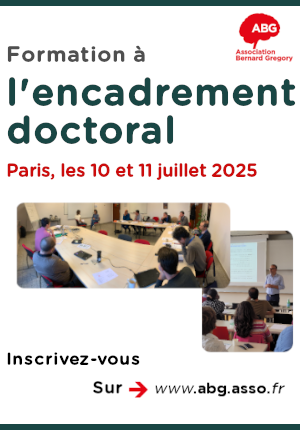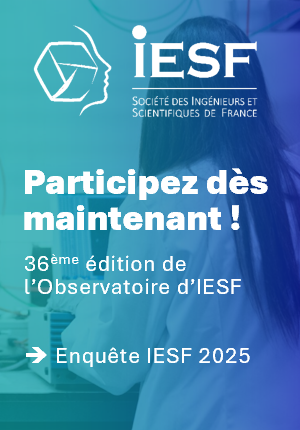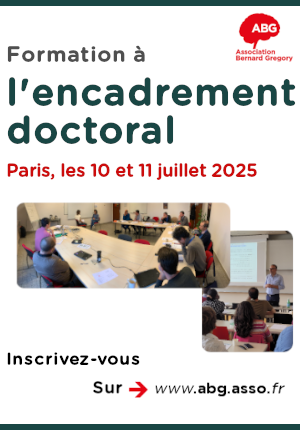IRM anatomique accélérée à haute résolution à 11,7T à l'aide de SPARKLING // Accelerated high-resolution anatomical MRI at 11.7T using SPARKLING
| ABG-131078 | Sujet de Thèse | |
| 16/04/2025 | Financement public/privé |
CEA Paris-Saclay
Saclay
IRM anatomique accélérée à haute résolution à 11,7T à l'aide de SPARKLING // Accelerated high-resolution anatomical MRI at 11.7T using SPARKLING
- Biologie
Imagerie médicale / Sciences du vivant
Description du sujet
L'imagerie par résonance magnétique (IRM) est devenue la modalité d’imagerie de référence en neuroimagerie pour explorer de manière non invasive la structure et les fonctions cérébrales. En particulier, l'IRM anatomique est un outil standard pour le diagnostic clinique et la recherche, où l'imagerie pondérée en T1 est la séquence la plus couramment utilisée. Cependant, cette modalité est limitée par des temps d'acquisition longs, surtout pour l'imagerie anatomique haute résolution. À cet égard, l’échantillonnage non-cartésien permet d’accélérer les acquisitions grâce à des trajectoires flexibles, telles que SPARKLING (initialement développée pour l'imagerie pondérée en T2*), qui permettent un échantillonnage efficace de l’espace k, facilitant ainsi des reconstructions itératives optimales au sens de la qualité d'image.
Dans cette thèse, l’approche SPARKLING sera étendue à l’imagerie T1-MPRAGE, avec pour objectif d’accélérer les acquisitions d’un facteur 10 à 15, permettant des acquisitions isotropes de 1 mm de résolution sous la minute. Pour des extensions à la séquence MP2RAGE, impliquant des échantillonnages redondants à différents temps d'inversion (TI), nous proposons un nouveau schéma de sous-échantillonnage entrelacé et une reconstruction correspondante, minimisant ainsi la redondance entre les différentes trajectoires d’acquisition et maximisant l'efficacité du processus d'acquisition. En pratique, l’innovation est liée à une extension 3D+temps de l'algorithme SPARKLING, origine, quiproduit des motifs d’acquisition complémentaires pouvant être combinés grâce au schéma de reconstruction 4D proposé. Enfin, la thèse se concentrera également sur la caractérisation du profil de bruit dans l’espace k pour les acquisitions non-cartésiennes et son effet sur la résolution des images IRM reconstruites. Cela nous aidera à construire des trajectoires d'échantillonnage optimisées pour le rapport signal/bruit, qui seront validées par rapport aux protocoles de pointe utilisés en clinique (comme MP2RAGE) à des intensités de champ allant de 3T à 11,7T. La comparaison de tous les schémas d’acquisition sera effectuée à l’aide de métriques quantitatives ainsi que d'évaluations radiologiques qualitatives, en collaboration avec des radiologues de NeuroSpin et de l'hôpital AP-HP Henri Mondor.
------------------------------------------------------------------------------------------------------------------------------------------------------------------------
------------------------------------------------------------------------------------------------------------------------------------------------------------------------
Magnetic resonance Imaging (MRI) has become the reference neuroimaging technique for probing brain structure and function non-invasively. In particular, anatomical MRI is a gold standard for clinical imaging diagnosis and research, with T1-weighted imaging being the most commonly used sequence. However, the use of this imaging modality is limited by long acquisition times, especially for high resolution anatomical imaging. In this regard, non-Cartesian sampling can accelerate acquisitions through flexible sampling trajectories like SPARKLING, which can efficiently sample k-space and allow efficient and optimal iterative reconstructions with minimal degradation in image quality. In this PhD thesis, the SPARKLING framework which was originally developed for T2*-w imaging will be extended to MPRAGE T1-w imaging, with a goal to accelerate the acquisitions by a factor of 10-15 times, thereby allowing us to reach 1-mm isotropic acquisitions within a minute. Additionally, for extensions of anatomical imaging schemes involving redundant sampling at different inversion times (TI) like MP2RAGE, we propose a novel interleaved under-sampling acquisition and corresponding reconstruction scheme, which minimizes redundancy across different readouts, allowing us to maximally accelerate the acquisition process. In practice, this is achieved through 3D+time extension of the SPARKLING algorithm, that can be combined through the proposed 4D reconstruction scheme. Finally, the thesis will also focus on characterizing the noise profile in k-space for non-Cartesian acquisitions and its effect on the observed resolution in the reconstructed MR images. This will help us build SNR-optimized sampling trajectories, which will be validated against state-of-the-art and clinically utilized protocols (like MP2RAGE) at varying field strengths from 3T to 11.7T. Benchmarking of all the acquisition schemes will be performed through quantitative metrics and also qualitative radiological evaluations, through collaboration of radiologists at NeuroSpin and AP-HP Henri Mondor hospital.
------------------------------------------------------------------------------------------------------------------------------------------------------------------------
------------------------------------------------------------------------------------------------------------------------------------------------------------------------
Pôle fr : Direction de la Recherche Fondamentale
Département : Institut des sciences du vivant Frédéric JOLIOT
Service : Service Neurospin
Date de début souhaitée : 01-10-2025
Ecole doctorale : Physique et Ingénierie: électrons, photons et sciences du vivant (EOBE)
Directeur de thèse : Vignaud Alexandre
Organisme : CEA
Laboratoire : DRF/JOLIOT/NEUROSPIN/BAOBAB/METRIC
URL : https://onlinelibrary.wiley.com/doi/full/10.1002/mrm.29702
Dans cette thèse, l’approche SPARKLING sera étendue à l’imagerie T1-MPRAGE, avec pour objectif d’accélérer les acquisitions d’un facteur 10 à 15, permettant des acquisitions isotropes de 1 mm de résolution sous la minute. Pour des extensions à la séquence MP2RAGE, impliquant des échantillonnages redondants à différents temps d'inversion (TI), nous proposons un nouveau schéma de sous-échantillonnage entrelacé et une reconstruction correspondante, minimisant ainsi la redondance entre les différentes trajectoires d’acquisition et maximisant l'efficacité du processus d'acquisition. En pratique, l’innovation est liée à une extension 3D+temps de l'algorithme SPARKLING, origine, quiproduit des motifs d’acquisition complémentaires pouvant être combinés grâce au schéma de reconstruction 4D proposé. Enfin, la thèse se concentrera également sur la caractérisation du profil de bruit dans l’espace k pour les acquisitions non-cartésiennes et son effet sur la résolution des images IRM reconstruites. Cela nous aidera à construire des trajectoires d'échantillonnage optimisées pour le rapport signal/bruit, qui seront validées par rapport aux protocoles de pointe utilisés en clinique (comme MP2RAGE) à des intensités de champ allant de 3T à 11,7T. La comparaison de tous les schémas d’acquisition sera effectuée à l’aide de métriques quantitatives ainsi que d'évaluations radiologiques qualitatives, en collaboration avec des radiologues de NeuroSpin et de l'hôpital AP-HP Henri Mondor.
------------------------------------------------------------------------------------------------------------------------------------------------------------------------
------------------------------------------------------------------------------------------------------------------------------------------------------------------------
Magnetic resonance Imaging (MRI) has become the reference neuroimaging technique for probing brain structure and function non-invasively. In particular, anatomical MRI is a gold standard for clinical imaging diagnosis and research, with T1-weighted imaging being the most commonly used sequence. However, the use of this imaging modality is limited by long acquisition times, especially for high resolution anatomical imaging. In this regard, non-Cartesian sampling can accelerate acquisitions through flexible sampling trajectories like SPARKLING, which can efficiently sample k-space and allow efficient and optimal iterative reconstructions with minimal degradation in image quality. In this PhD thesis, the SPARKLING framework which was originally developed for T2*-w imaging will be extended to MPRAGE T1-w imaging, with a goal to accelerate the acquisitions by a factor of 10-15 times, thereby allowing us to reach 1-mm isotropic acquisitions within a minute. Additionally, for extensions of anatomical imaging schemes involving redundant sampling at different inversion times (TI) like MP2RAGE, we propose a novel interleaved under-sampling acquisition and corresponding reconstruction scheme, which minimizes redundancy across different readouts, allowing us to maximally accelerate the acquisition process. In practice, this is achieved through 3D+time extension of the SPARKLING algorithm, that can be combined through the proposed 4D reconstruction scheme. Finally, the thesis will also focus on characterizing the noise profile in k-space for non-Cartesian acquisitions and its effect on the observed resolution in the reconstructed MR images. This will help us build SNR-optimized sampling trajectories, which will be validated against state-of-the-art and clinically utilized protocols (like MP2RAGE) at varying field strengths from 3T to 11.7T. Benchmarking of all the acquisition schemes will be performed through quantitative metrics and also qualitative radiological evaluations, through collaboration of radiologists at NeuroSpin and AP-HP Henri Mondor hospital.
------------------------------------------------------------------------------------------------------------------------------------------------------------------------
------------------------------------------------------------------------------------------------------------------------------------------------------------------------
Pôle fr : Direction de la Recherche Fondamentale
Département : Institut des sciences du vivant Frédéric JOLIOT
Service : Service Neurospin
Date de début souhaitée : 01-10-2025
Ecole doctorale : Physique et Ingénierie: électrons, photons et sciences du vivant (EOBE)
Directeur de thèse : Vignaud Alexandre
Organisme : CEA
Laboratoire : DRF/JOLIOT/NEUROSPIN/BAOBAB/METRIC
URL : https://onlinelibrary.wiley.com/doi/full/10.1002/mrm.29702
Nature du financement
Financement public/privé
Précisions sur le financement
Présentation établissement et labo d'accueil
CEA Paris-Saclay
Pôle fr : Direction de la Recherche Fondamentale
Département : Institut des sciences du vivant Frédéric JOLIOT
Service : Service Neurospin
Profil du candidat
Postuler
Fermer
Vous avez déjà un compte ?
Nouvel utilisateur ?
Besoin d'informations sur l'ABG ?
Vous souhaitez recevoir nos infolettres ?
Découvrez nos adhérents
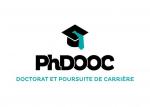 PhDOOC
PhDOOC  Institut Sup'biotech de Paris
Institut Sup'biotech de Paris  ONERA - The French Aerospace Lab
ONERA - The French Aerospace Lab  Aérocentre, Pôle d'excellence régional
Aérocentre, Pôle d'excellence régional  ASNR - Autorité de sûreté nucléaire et de radioprotection - Siège
ASNR - Autorité de sûreté nucléaire et de radioprotection - Siège  Laboratoire National de Métrologie et d'Essais - LNE
Laboratoire National de Métrologie et d'Essais - LNE 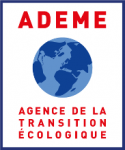 ADEME
ADEME  Nokia Bell Labs France
Nokia Bell Labs France  Tecknowmetrix
Tecknowmetrix  Groupe AFNOR - Association française de normalisation
Groupe AFNOR - Association française de normalisation  CASDEN
CASDEN  SUEZ
SUEZ  MabDesign
MabDesign  Généthon
Généthon  CESI
CESI 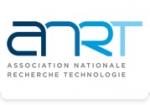 ANRT
ANRT  Ifremer
Ifremer  MabDesign
MabDesign 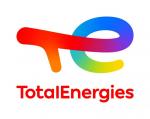 TotalEnergies
TotalEnergies

